Ask most gym-goers what part of their body they most want to strengthen, and chances are they’ll point at their midsection. Strong core muscles guard against hip and back pain; they help us carry our kids without strain; they make us stand taller. They aid in the efficient transfer of power from the lower to the upper body, and they improve our performance in everything from cardio to weight training to moving furniture. A solid core is the key to true strength and function.
Yet fitness experts joke that while everyone talks about core training, virtually no one ever does anything about it. People tend to choose exercises that work only the superficial muscles of the core — crunching away like it’s Walnut Day at the county fair.
But a small group of experts is trying to change that. Defined abs depend more on what you do at the dinner table than what you do in the gym, so instead of obsessing over appearance, these coaches focus on developing a core that will keep us pain- and injury-free, whether we’re pitching fastballs or planting dahlias. The bonus? You’ll probably end up with a better-looking midsection, too.
Core-Training Challenges
Most people assume the core is simply the rectus abdominis, or the six-pack muscles. But the truth goes deeper. “Realistically, the core is everything from your chin to your thighs,” says Michael Boyle, MEd, CSCS, founder of www.strengthcoach.com. The core brings up the rear, too, including the back, glutes and hamstrings.
Training this intricate set of muscles presents a unique challenge, says Boyle, because current science suggests that rather than just creating motion like most muscle groups do (think about what the biceps do during a curl), the function of the core is also to resist unwanted movement, such as twisting or bending, around the spine. In other words, it should keep the spine both stiff and supple when outside forces — such as the weight of a squirming toddler — are placed upon it.
“The core is designed to be a spring to store and recover elastic energy,” says Stuart McGill, BPE, MEd, PhD, professor of spine biomechanics at the University of Waterloo in Canada and author of Low Back Disorders: Evidence-based Prevention and Rehabilitation (Human Kinetics, 2007). An optimal program should train the muscles to do just that.
What Not to Do
In search of that elusive six-pack, many gym-goers turn to crunches, ab machines and other isolation exercises drawn from bodybuilding-style workouts. But this approach can do more harm than good. “If you use bad form or too much weight, you can injure yourself,” warns Sara Wiley, MS, CSCS, strength and conditioning coach at the University of Minnesota in Minneapolis.
Back pain and disc damage can also result from overextending or twisting the lumbar spine during exercise (think rotating medicine-ball throws), says Jim Smith, CSCS, creator of the DVD series Combat Core Strength. When you engage in rotational movements — fast or slow — the rotation (and power) should occur and be generated from the hips and thoracic spine. Smith says he’s had many clients who have hurt their backs by rotating improperly in poorly supervised yoga classes. (For a smarter approach to spinal mobility, see ”Back in Trouble”.)
Going too hard for too long is another common mistake. “I’d rather do things that are harder for fewer reps,” says Boyle. “What causes spinal discs to deteriorate is repeated flexion.
Crunches, in which you draw your rib cage toward your pelvis, are a classic example of repeated flexion. In fact, when scientists want to damage the spine of a cadaver for research purposes, Boyle says, they put it in a device that’s virtually identical to the crunch machine. Says McGill: “Everyone has a finite capacity to perform any given movement. Want to use yours up doing crunches? Wouldn’t be my choice.”
The New Core Values
If the core is, anatomically speaking, everything but the kitchen sink, how do we train it in a meaningful way? Every good trainer will have his or her own approach, but they all follow a handful of principles:
- Seek stiffness. McGill directs his clients and athletes to “create a balanced stiffness all the way around the body” when they exercise. If your spine is in a neutral posture — neither flexed nor arched — and your abdominals, obliques and spinal erectors are firm to the touch, you’re there. Good core exercises challenge your capacity to hold this posture under stress.
- Find balance. Balance requires training the sides and back of the torso as well as the front. The stability-ball rollout and its variations (see “Top 5 Core Exercises,” below) are ideal because they effectively fire up the entire torso.
- Hold it. “The job of the anterior [frontal] core muscles is to prevent your stomach from sticking out and to prevent your pelvis from tilting,” says Boyle. Both tasks require you to resist the pull of gravity, often for an extended period, so look for exercises that similarly require isometric endurance: Plank variations and bird dogs are excellent choices.
- Think big. Once you’ve learned to activate your core muscles properly, you should expand your program to include full-body athletic movements, as well. “You’re teaching a muscular orchestra to play,” says McGill. Exercises like the farmer’s walk and the anti-rotation arc force your core to stabilize the spine while the rest of the body is in motion.
Core training is both more complex and simpler than most of us think. It may require more than crunches, but it certainly doesn’t entail a garage full of gadgetry. Once you understand the true function of the core — spine stabilization — and how to achieve it through balanced, intelligent training, it’s easy to determine which of the thousand-and-one core exercises out there are worth your time. Start doing these movements regularly and maybe you’ll stir up an anti-crunch revolution among the athletes at your local gym. Their backs will thank you for it.
Core Training at a Glance
OK, you’re sold on the benefits of the new wave of core exercises. Here’s what to keep in mind while you’re doing them:
- Do preserve the natural curve of the lumbar spine throughout all core movements.
- Do maintain continuous tension in the front and sides of the core.
- Do perform a variety of exercises for the front, sides and back of the torso.
- Don’t overdo it. Pick a couple of exercises from below and perform at most three sets, three times a week. The core is also challenged whenever you do squats, dead lifts, lunges and heavy overhead presses, so you don’t need to add too much direct work.
- Don’t perform exercises that require you to flex the spine repeatedly or rotate forcefully, both of which can strain your back.
- Don’t focus on isolation exercises, like crunches and machine work. Focus instead on working the core in conjunction with your larger muscle groups.
Top 5 Core Exercises
Unlike crunches and other isolation moves, these exercises challenge the core to stabilize the spine under load — mimicking sports and the demands of everyday life.
Bird Dog

- Start on all fours on a padded surface.
- Squeeze your left fist and lift your left arm until it’s parallel to the floor in front of you. At the same time, extend your right leg straight out behind you, taking care not to arch your lower back.
- Slowly return to the starting position and repeat with the opposite arm and leg.
- Maintain an engaged core and a neutral spine throughout.
- Repeat for three sets of 10 to 12 reps on each side.
- Make it harder by holding the extended position on each side for up to 30 seconds. (For additional tips, check out “BREAK IT DOWN: The Bird Dog“.)
Log Roll Plank
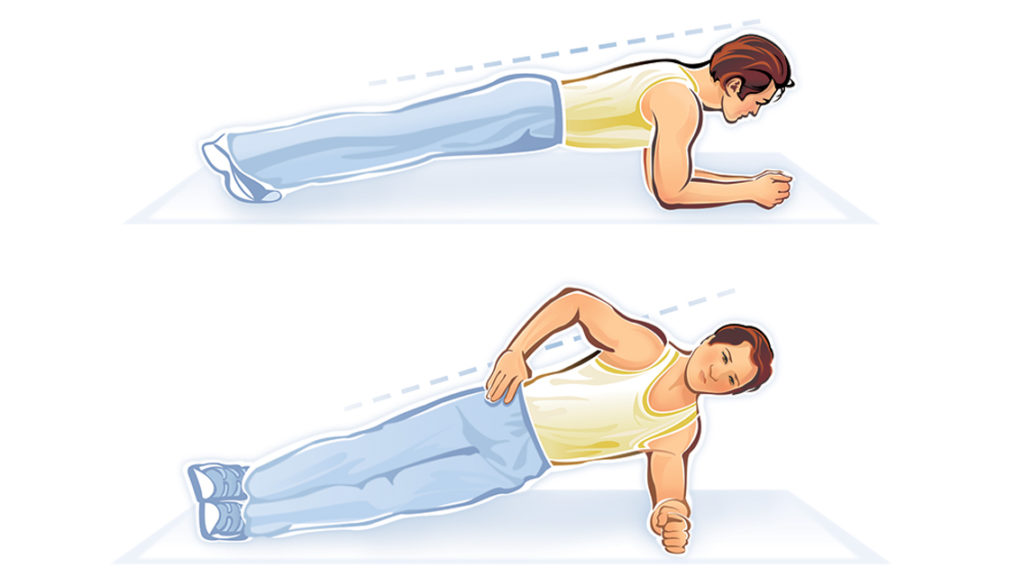
If you can hold the standard front plank and side plank for a minute each, try this version.
- Starting in a standard front-plank position, lift one elbow off the floor and roll to one side until you’re in a side-plank position. Keep the hips and shoulders aligned throughout.
- Rotate your body back down to front plank, again moving the body as a unit.
- Repeat for three sets of eight to 10 on each side.
- Make it harder by speeding up each repetition.
Anti-Rotation Arc
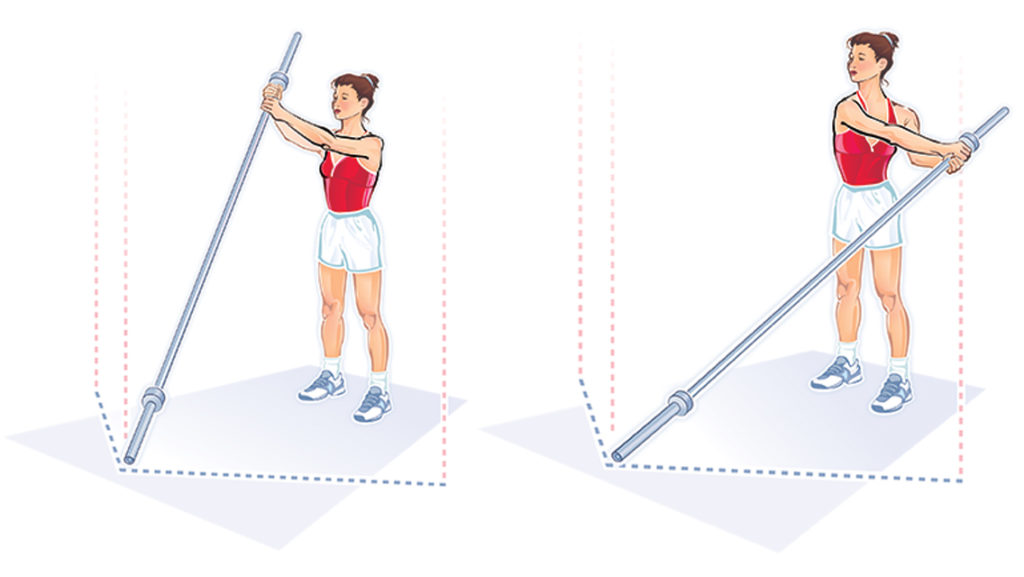
If you’ve been training for at least six months and need a new challenge, give this exercise a try.
- Wedge one end of an Olympic barbell into a corner of the gym. Grab the opposite end just inside the thick sleeve at the end of the bar where you load the weight plates.
- Holding the bar with a close mixed grip, lift the free end of the bar over your head, arms straight, and lower it toward the opposite hip, moving from one side to the other.
- Stabilize at the core, making sure to resist bending or twisting throughout.
- Repeat for two or three sets of 10 to 12 reps.
- Make it harder by adding weight to the bar.
Stability-Ball Roll Out

- Kneel on a padded surface with a large stability ball in front of your knees. Clasp your hands together, place your wrists on top of the ball, and lean your weight into the ball.
- Keeping your core engaged throughout, roll your arms up the ball until your body forms a straight line from knees to shoulders.
- Return to the starting position by pressing your forearms down into the ball and pushing your hips back.
- Once you can do three sets of 15 reps, progress to a smaller ball until you can perform the movement with an ab wheel. (See how to use an ab wheel.)
Farmer’s Walk
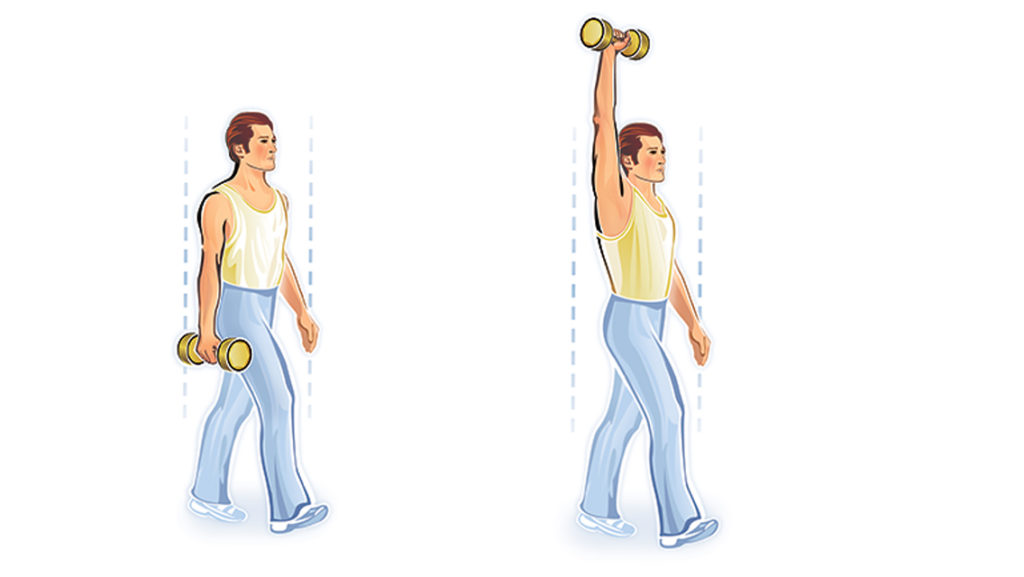
How’s this for simple?
- Hold something heavy and walk. Maintain good posture, keeping your shoulders over your hips.
- Start with two medium-heavy dumbbells held at your sides.
- Make it harder by using just one dumbbell (taking care not to let it pull you out of alignment), or by holding a barbell or dumbbell overhead as you walk.
- With the overhead versions, take care not to hyperextend the lower back.
- Repeat for three sets of 30 seconds to a minute.
This article originally appeared as “Core Essentials.”
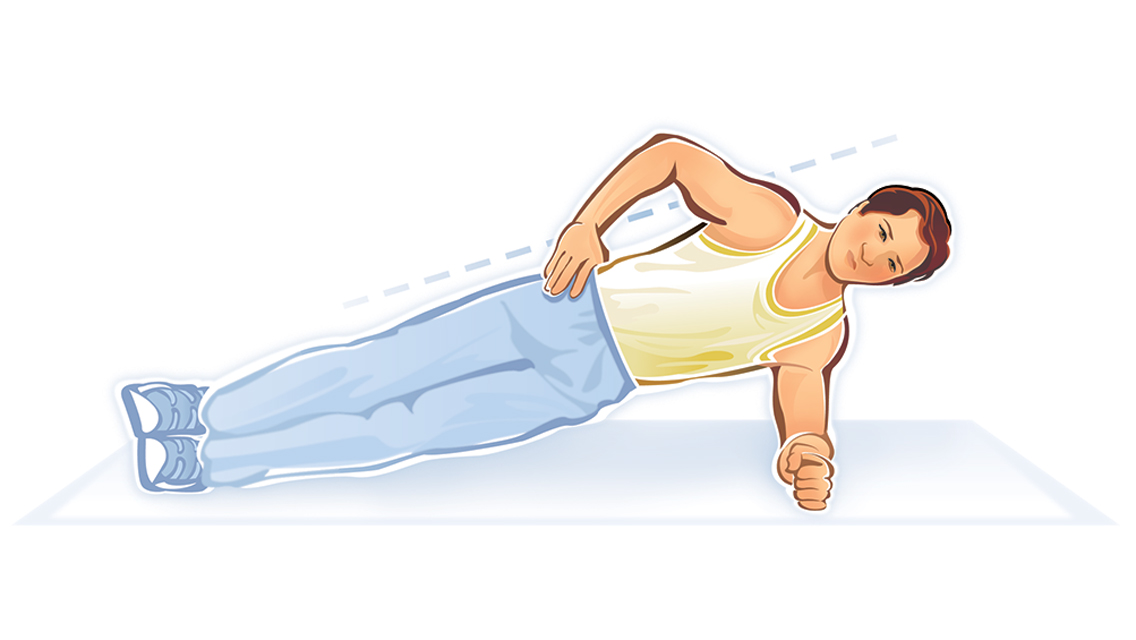
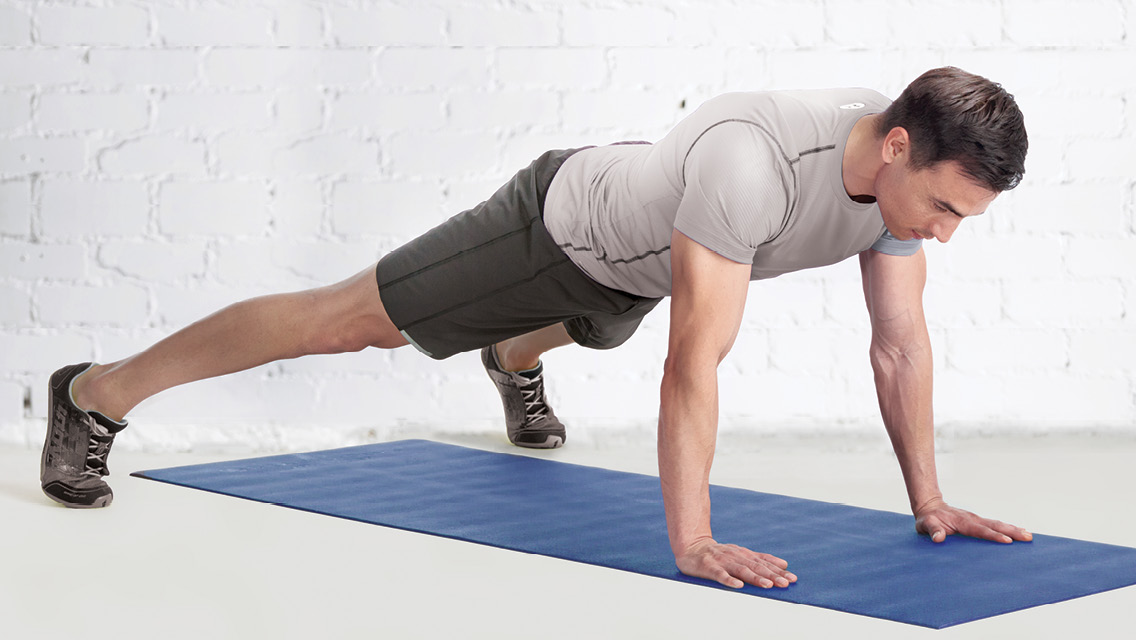
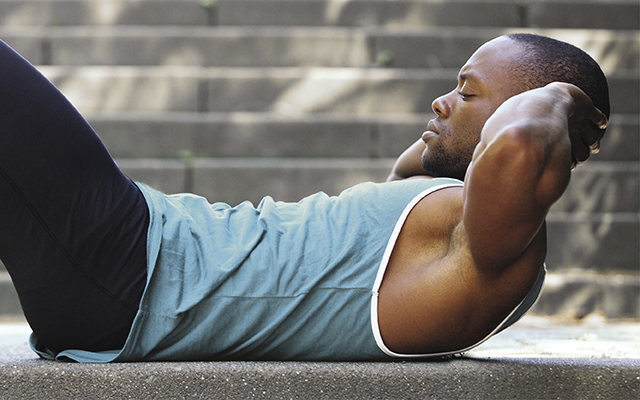
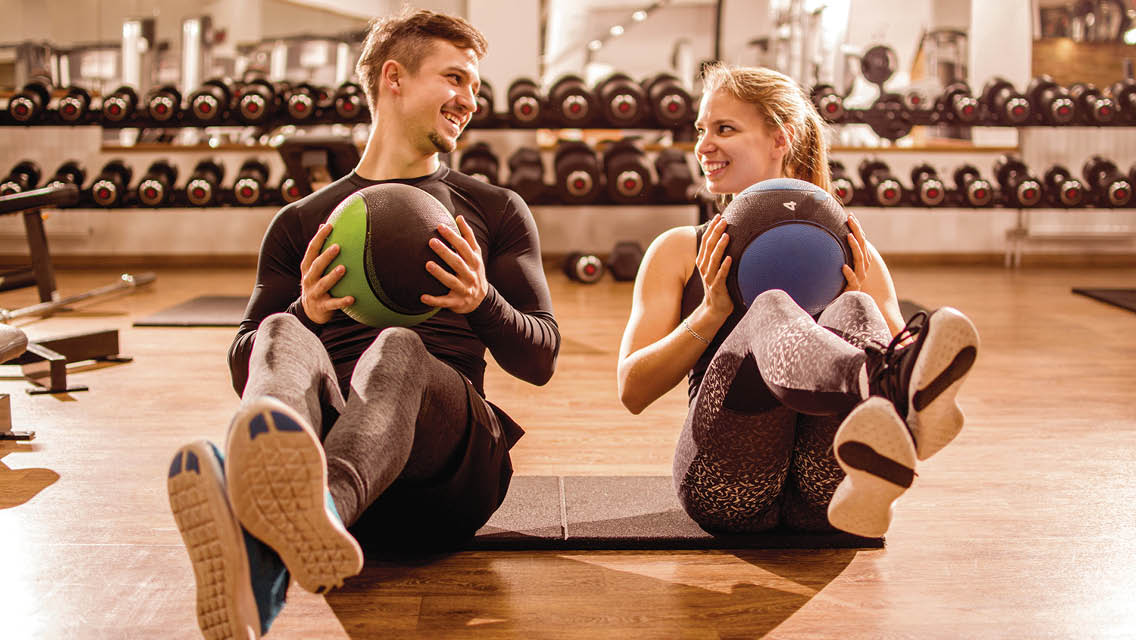
This Post Has 0 Comments